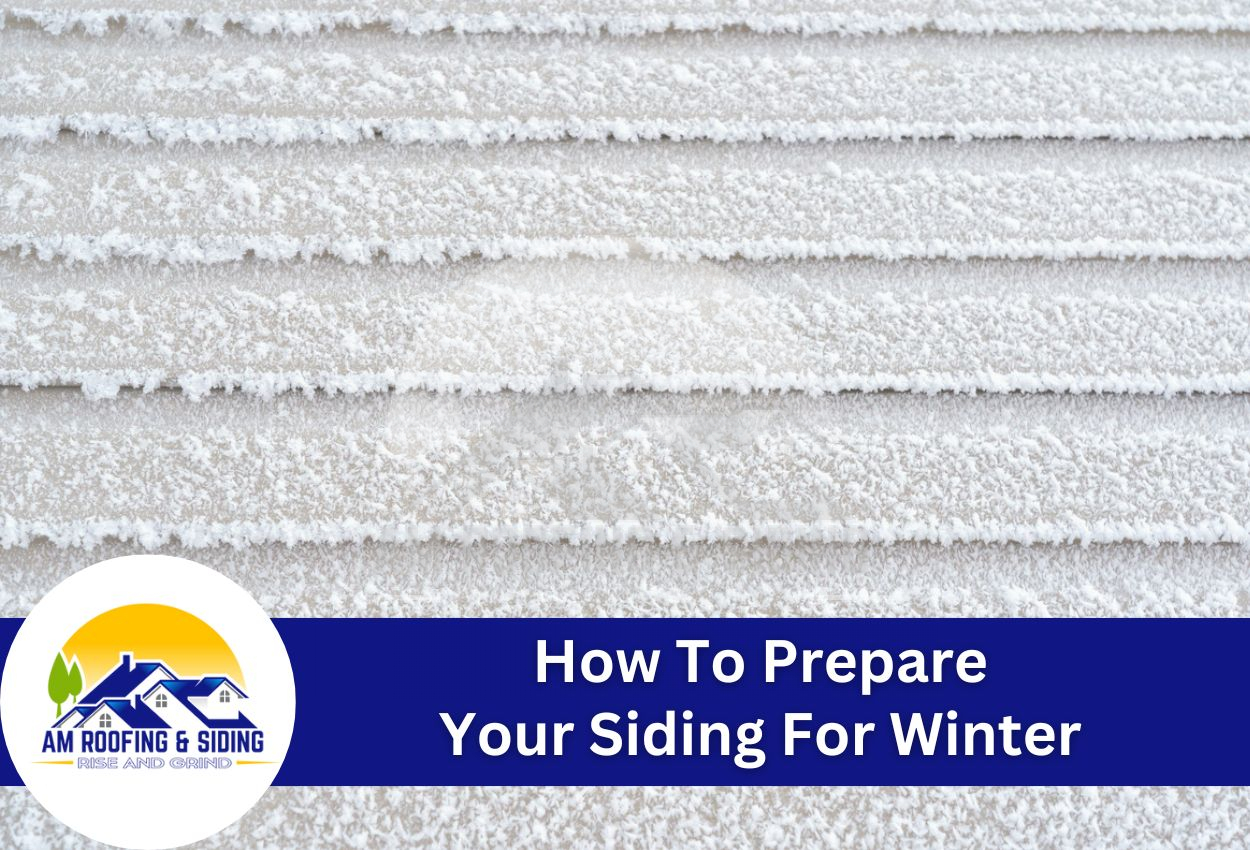As winter approaches, the dropping temperatures and harsh conditions pose a significant threat to the exterior of homes, particularly the siding. Preparing your siding for winter is crucial to protect your home from the elements and avoid costly damages. This section will guide you through the essential steps and considerations for winter siding maintenance, ensuring your home remains safe and insulated against the cold.
Different types of siding materials, from vinyl to wood, each have unique vulnerabilities that can be exacerbated by winter weather. Understanding these specific challenges is the first step in effective winter preparation. Whether it’s combating moisture infiltration in fiber cement siding or preventing the cracking and warping of vinyl, the right maintenance tips can make a significant difference. This article will explore various topics such as how to protect siding from snow, the best siding options for cold climates, and effective siding insulation techniques for winter. By implementing winter-proofing practices, you can extend the life of your siding and enhance your home’s overall resilience to the season’s impact.
Assessing Your Siding’s Current Condition
Before the chill of winter sets in, it’s essential to conduct a thorough inspection of your home’s siding to ensure it’s in optimal condition. This step is pivotal not only in preparing siding for winter but also in preventing potential exacerbations of existing damage due to harsh weather conditions. Start by visually inspecting the entire exterior of your home. Look for signs of wear and tear such as cracks, warps, or loose pieces that could indicate underlying issues.
Common signs that your siding needs attention before winter include peeling paint, soft spots that might suggest rot, or any evidence of pest infestation. These issues, if not addressed, can worsen under the stress of winter conditions like heavy snowfall and freezing temperatures. It is especially crucial in areas like Central Ohio, where winters can be particularly severe, to ensure your siding is well-maintained. Assessing the state of your siding also involves checking for adequate insulation, which plays a vital role in maintaining your home’s energy efficiency during cold months. This assessment will guide your efforts in winter-proofing your home siding, helping you choose the right maintenance strategies to safeguard your investment.
Cleaning and Repairs: Essential First Steps
To ensure your siding withstands the rigors of winter, starting with a thorough cleaning is crucial. This process involves removing dirt, debris, and any growths like mold or mildew that can compromise the siding’s integrity. Begin by gently washing your siding with a soft brush or cloth and a cleaning solution suitable for your siding type. This will not only enhance its appearance but also prevent materials like vinyl from becoming brittle in cold weather.
After cleaning, inspect your siding for any minor damages that could potentially worsen during the winter. Small cracks or holes should be sealed to prevent water from infiltrating and causing further damage. For materials like wood, it might be necessary to replace damaged sections to prevent rot. These repairs are vital for maintaining the structural integrity of your home and should be handled promptly to avoid more extensive and expensive damage. By following these winter siding maintenance tips, you can effectively prepare your home for the challenges of the winter season.
Protecting Siding from Snow and Ice Accumulation
One of the critical aspects of preparing siding for winter is protecting it from the damaging effects of snow and ice accumulation. Snow and ice can exert significant weight and moisture, leading to issues such as ice dams and siding damage. Employing effective techniques and using the right tools can help mitigate these risks and maintain the integrity of your home’s exterior.
To prevent snow and ice damage on siding surfaces, it is essential to ensure proper water drainage away from the house. This includes cleaning gutters and downspouts before the winter season hits. Installing heated gutter cables can also prevent ice dams by stopping ice from forming and backing up onto the siding. Additionally, strategic use of snow guards and heating tapes along roof edges can help manage snow load and reduce the likelihood of ice accumulation directly against the siding.
Various products can further enhance protection against harsh winter conditions. For example, applying a water-repellent sealant to wood siding can prevent moisture penetration and subsequent freezing, which can crack or split the siding. Similarly, for homes in regions prone to heavy snowfall, like Central Ohio, upgrading to insulated or engineered siding might be a worthwhile consideration. These materials not only offer better resistance to winter weather but also improve the home’s overall energy efficiency.
Long-Term Maintenance and Winter Proofing Strategies
Regular maintenance of your home’s siding is crucial for its longevity and aesthetic appeal, especially as winter approaches. By conducting annual inspections and addressing any issues early, you can minimize the risk of damage caused by cold weather conditions. This section will cover essential maintenance tips and strategies for winter-proofing your home siding, ensuring it remains in top condition year-round.
Initiating routine checks before the onset of winter can help identify potential vulnerabilities in your siding that could lead to bigger problems if left unattended. Inspect for any signs of deterioration such as cracks, mold, or detachment that can be exacerbated by freezing temperatures and moisture. This preventive measure is particularly important in regions like Central Ohio, where the winters are notably harsh.
Additionally, understanding the importance of proper siding insulation and choosing the best siding materials for cold climates can significantly enhance your home’s defense against the cold. Implementing strategies such as sealing gaps, reinforcing insulation, and using materials suited for low temperatures will not only protect your siding from snow and ice but also contribute to overall energy efficiency. By following these winter siding maintenance tips and incorporating effective winterproofing practices, you can ensure that your home remains warm, safe, and visually appealing throughout the winter season.
Choosing the Right Materials for Cold Climates
When preparing siding for winter, selecting the appropriate materials is crucial, especially in areas like Central Ohio where the winter can be particularly harsh. The best siding for cold climates not only withstands severe weather but also helps maintain the energy efficiency of your home.
Vinyl and fiber cement are among the top choices for winter-proof home siding. Vinyl siding is popular due to its cost-effectiveness and low maintenance. It does not absorb water, which means it is less likely to freeze and crack in cold weather. However, it is vital to ensure that the vinyl siding is installed with proper insulation to maximize its benefits against the cold.
Fiber cement siding, on the other hand, offers excellent durability and resistance to winter-related damage. It is designed to withstand temperature fluctuations and is resistant to moisture and rot, making it an ideal choice for harsh climates. Additionally, fiber cement siding can be an effective way to enhance siding insulation for winter, helping to keep your home warm without excessive heating costs.
Ultimately, the choice of siding material should be based on a combination of factors including climate, the specific needs of your property, and budget. By choosing the right materials and employing winter siding maintenance tips, you can effectively protect your home from the rigors of cold weather and ensure that your siding remains in good condition for years to come.
Enhancing Siding Insulation for Energy Efficiency
The importance of proper insulation behind siding cannot be overstated, especially when it comes to preparing your home for the cold winter months. Effective insulation not only helps reduce heating costs but also plays a crucial role in protecting the interior from the harsh winter elements. This section will explore various insulation options and methods that significantly enhance thermal retention, ensuring your home stays warm and comfortable throughout the season.
There are several materials and techniques that can be applied to improve your home’s insulation. Traditional options like fiberglass batts and foam board insulation are commonly used due to their effectiveness and affordability. These materials are designed to fit snugly between the wall studs, reducing heat loss through the walls and keeping the cold at bay. Another innovative option is the use of spray foam insulation, which not only insulates but also seals air leaks, offering a comprehensive solution.
For homeowners in colder climates such as Central Ohio, choosing the best siding for cold climates is crucial. Materials like insulated vinyl siding or modified wood siding offer enhanced resistance to thermal transfer, making them excellent choices for maintaining interior warmth. Additionally, implementing strategies such as adding a house wrap or thermal barriers can further bolster your siding’s ability to withstand the cold, ultimately contributing to a more energy-efficient home.
Protect Your Home with AM Roofing & Siding
Don’t let winter wreak havoc on your siding. Ensure your home is ready to withstand the cold with AM Roofing & Siding. Call us today at (740) 974-8268 to schedule a comprehensive inspection and fortify your siding against the harsh winter elements. Don’t wait until it’s too late – take proactive steps to protect your investment and maintain your home’s curb appeal. Our expert team will guide you through the process of winter-proofing your siding, from insulation to material selection, ensuring your home remains beautiful and durable throughout the season.

